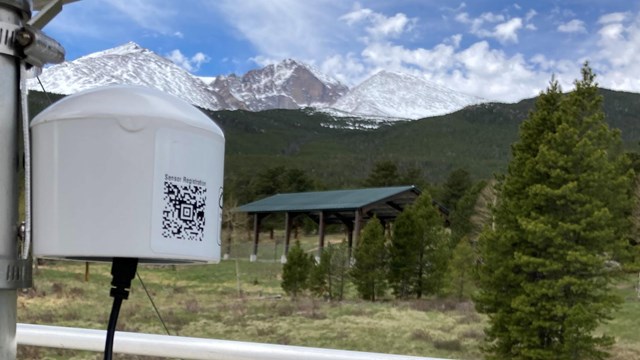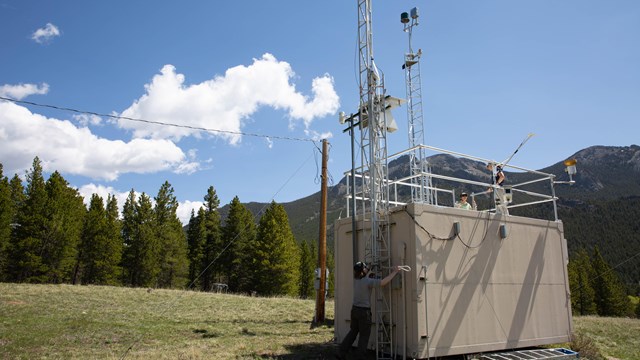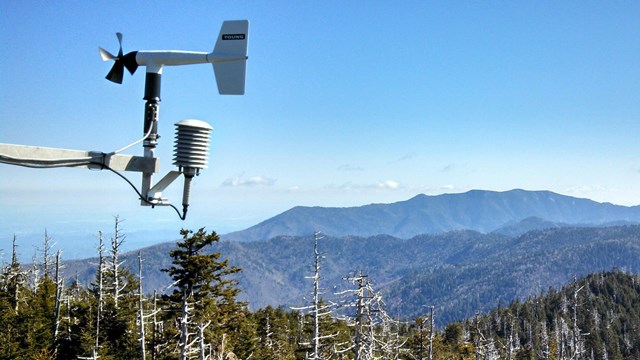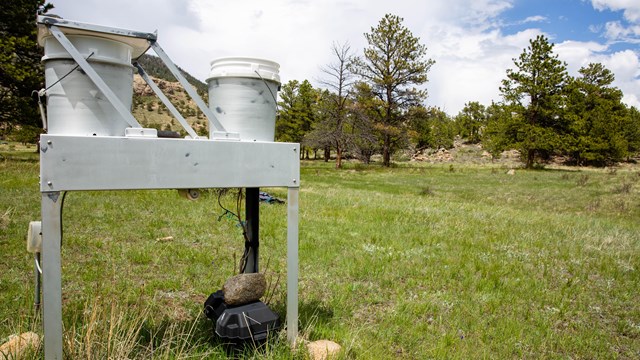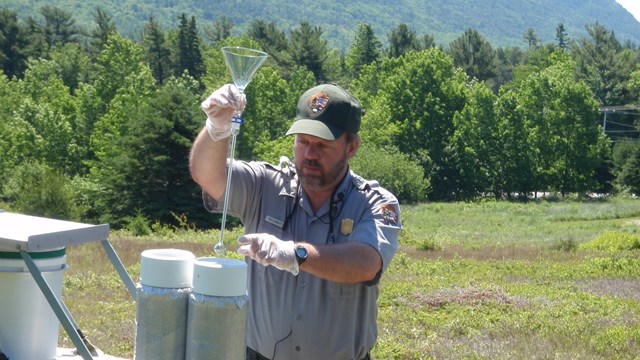Measuring and observing something regularly and in a systematic way over a period of time is called monitoring. The National Park Service participates in several national, multiagency air quality monitoring networks. These networks focus on ozone, visibility, particulate matter, and atmospheric deposition of nitrogen, sulfur, and mercury. Monitoring data allow us to better understand air quality in individual parks while gaining a valuable nationwide perspective on air quality conditions and trends.
How we measure...
The web pages linked below explain the science behind some of the most common air quality monitoring in parks. Explore these pages to see photos and videos of the equipment we use to measure air pollution in parks. Don't miss the videos where air quality experts explain the physics and chemistry behind how the equipment works.
Where we measure...
Currently, 74 parks have in-park monitoring of one or more air quality parameters and an additional 230 parks have nearby monitoring that is considered representative of park air quality conditions. Explore the maps below to see what kind of air quality monitoring is happening near your favorite park.
Last updated: August 7, 2025


